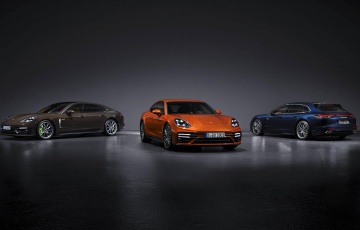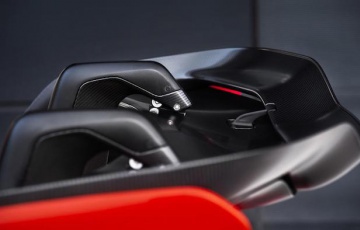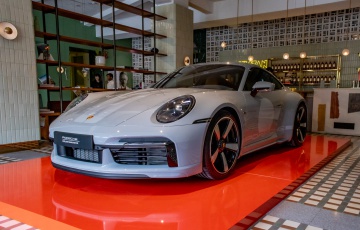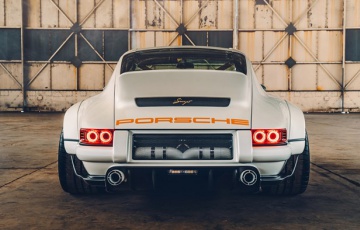GT-Up : Porsche 911 (997) GT3 Mk2 & GT2 Drive [review]
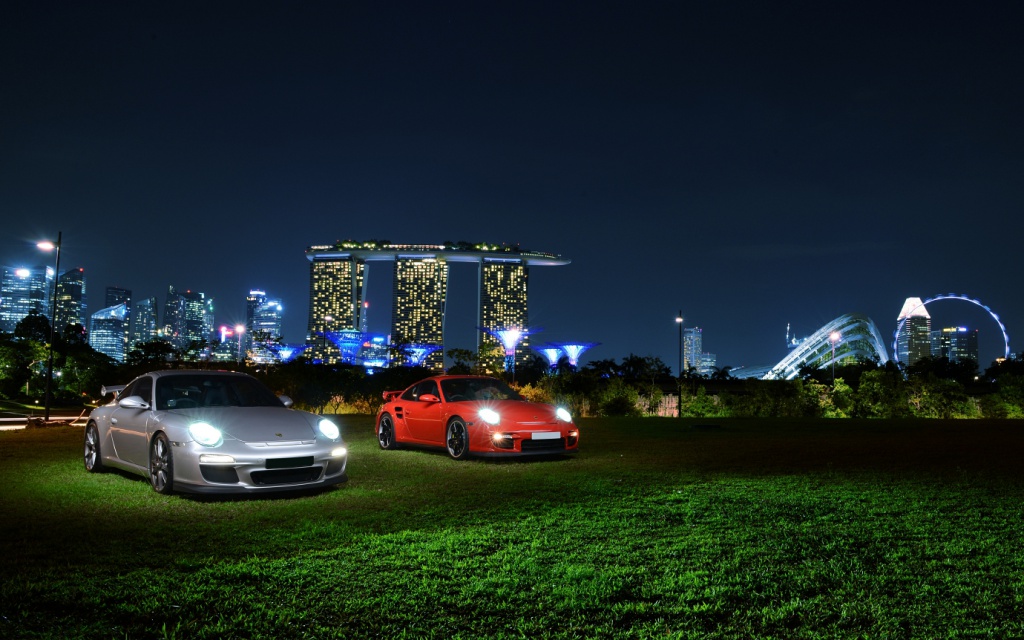

Singapore - Porsche’s rear-engined 911 is the brand’s most iconic car, and it also boasts one of the most extensive sportscar varieties in the business.
We can’t think of many instances where a ‘basic’ sportscar at the entry-level end of the model spectrum shares a similar silhouette with the supercar-baiting range-topping Turbo S, in addition to the many variants in-between spanning S$600k - 1m.
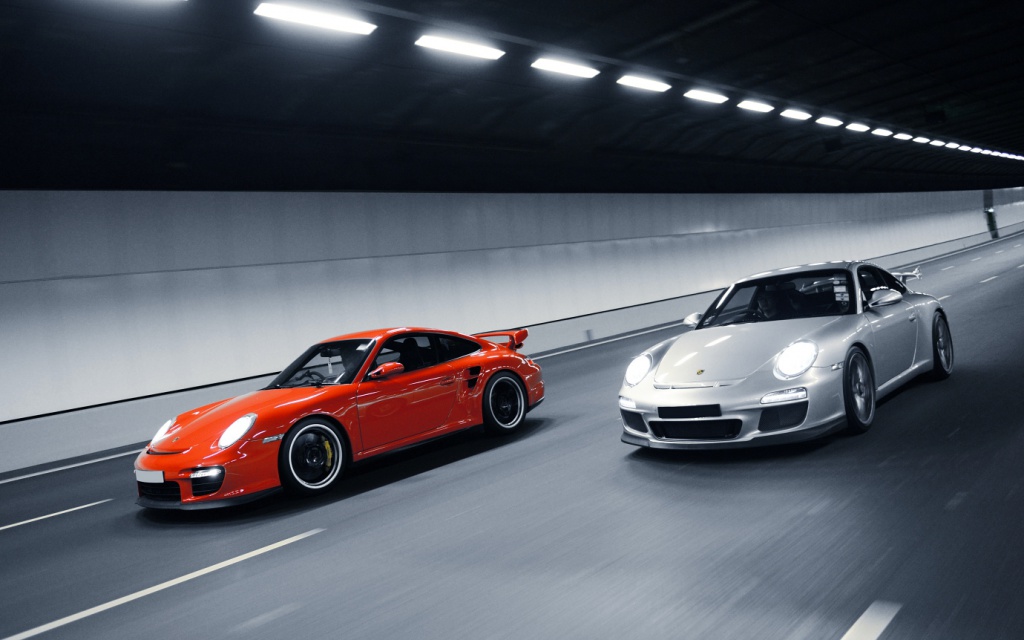
Porsche is descended from racing, it’s not one of those brands that talks about it or tries to conjure up a story for the masses – it actually walks the talk.
Appreciating this helps newcomers to the brand understand its offerings, be it latter day or historical.
Base Macan or top-tier 911, every Porsche is a sportscar – this tangibly intangible quality is an inextricable part of the Porsche DNA.
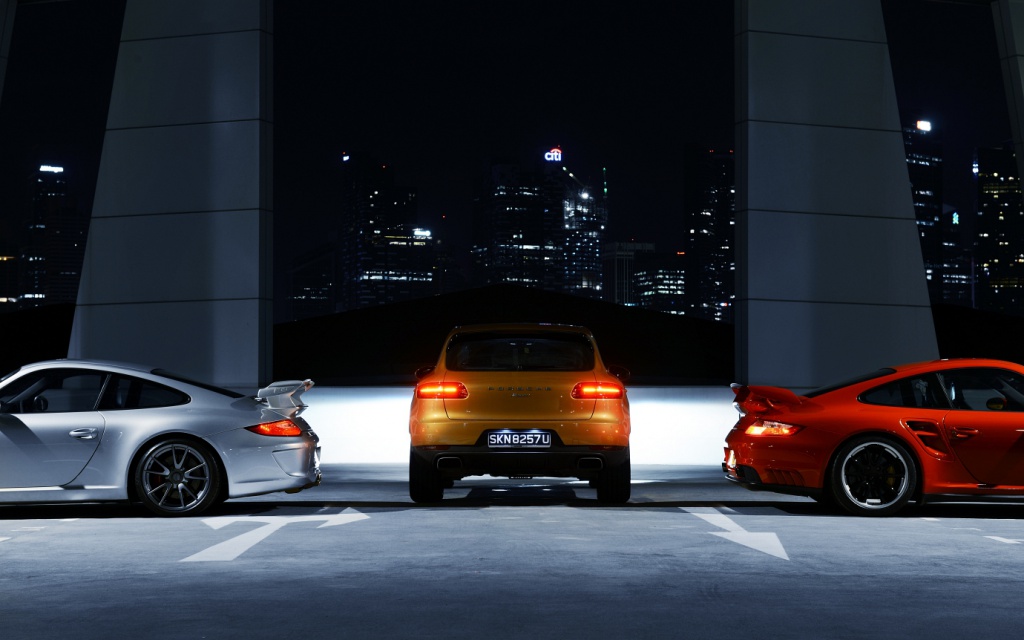
The 911 polarises opinions as far as engine placement and looks are concerned – this author is a huge fan, so some prejudice should be expected!
Its status in the supercar pantheon is a matter of great contention, but this icon continues to galvanise enough fans to aspire towards ownership.
If plain vanilla models aren’t your cuppa, there are the GT and hardcore RS models, which engage and challenge the driver on a primal level (as opposed to merely delivering point-and-squirt blistering outright pace – something the Turbo/S models deliver in spades).
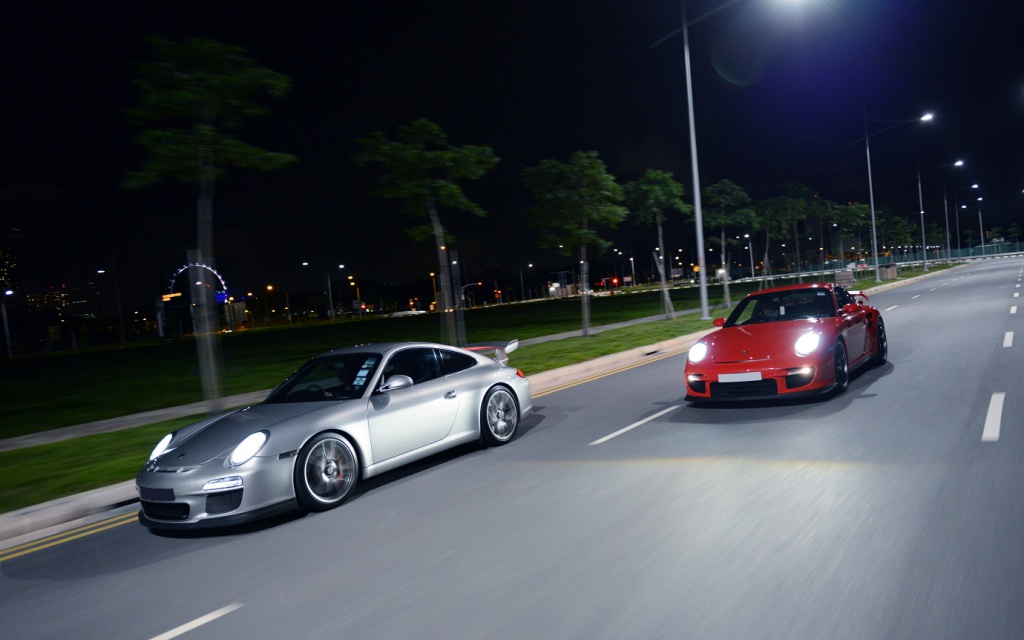
The GT/RS models are proper drivers’ cars and aren’t for the people who are sucked into the ‘effortlessly fast’ movement, since you actually need to run yourself ragged to achieve brisk progress… but it’s oh-so-satisfying.
The final manifestation of the Mezger in a GT model was the 997 GT3 RS 4.0, but we decide on two of the last non-RS versions to go with our 991 GT3 story: the 997 GT3 Mk2 and GT2: the former for its naturally-aspirated 3.8-litre, the latter for its twin-turbo’d 3.6-litre.
(Click HERE to read about the 964, 993 and 997.2 911 RSes)

Some Porsche enthusiasts take offense at any sort of paradigm shift for the brand, which can ignite discord that sees huge amounts of bandwidth sucked up by message board postings.
‘Aircooled vs Watercooled’, ‘PDK-only GT3’ and ‘Mezger vs DFI’ are just a few topics to have spawned many heated Internet ‘discussions’.
(Click HERE to read about a manual 991.2 GT3)
‘Mezger’ engines are so-named for Hans Mezger, who had worked on an assortment of racing programmes for the brand since the 1960s, including heading the specialised Motorsports department when it was formed.
These engines were resilient at the high revs typically seen on the race-track (both competitive and recreational) and designed to be rebuilt when necessary.
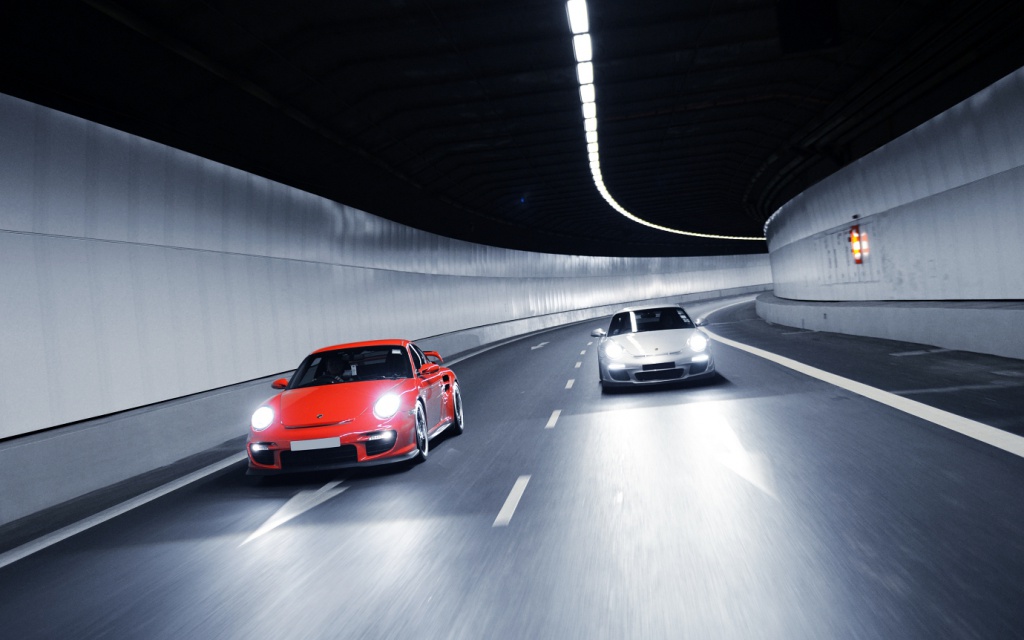
At the time of the 996 (start of the controversial water-cooled era), the term 'Mezger' engines was bandied about and referred specifically to the motorsports engines that were technically aligned to the 911 GT1, but had been shoehorned into sportier road-going 911 GT models.
Incidentally, the 996 would see the birth of the GT3 model created for racing homologation purposes, which was animated by the Mezger.
In fact, up until the direct-injection 991 GT3 (and 997 Mk2 Turbo/S), only the GT models, RS’ and Turbos’ had been powered by these 'Mezger' engines.

Silver Bullet - 997 GT3 Mk2
In our minds, the original stripped-out, ready-to-race 996 GT3 (’99-2004) progenitor to this range was more ‘RS’ than GT3, especially since there was no such ‘RS’ model at the time of its launch until the 996.2 appeared.
It also probably kick-started the whole Mezger ‘fascination’ with the (then) new breed of water-cooled flat-sixes, following the last of the air-cooled cars.
(Click HERE to read about our Drive Review of the 964 Carrera RS, 993 Carrera RS and the 997 GT3 RS)
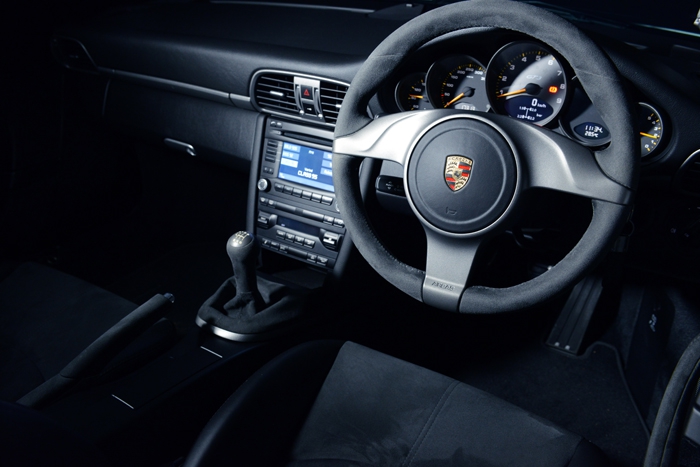
Porsche must have realised the evocative allure of the ‘RS’ badge – by the 996 Mk2, there was both GT3 and GT3 RS – with the latter, you were literally paying more for less… weight, which intensely enhanced an already ‘sharp’ handler’s dynamic properties.
Today, visual differences aside, the GT3 includes the right amount of mod-cons and a pliant enough ride for daily drive drudgery, but is armed to the teeth to let you slice and dice your way through a circuit or B-road during red-mist driving.
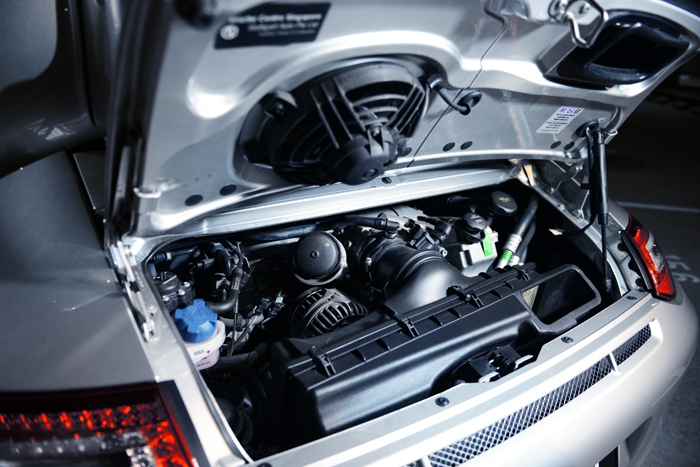
By the 997 GT3 Mk2, engine capacity had increased from 3.6- to 3.8-litres, with performance figures of 435bhp and 430Nm. The century sprint is dispatched in 4.1 seconds and top speed is rated at 312km/h.
Of course, raw numbers are for pub braggarts, since these GT models are driver’s cars...
It’s how the chassis and controls work so potently together in the 997 GT3 that lead you towards a sublime blend of driving nirvana, particularly with the driver merrily stirring the pot of the stick-shift-only model.
(Can't take manual transmissions for granted these days... click HERE to read about the PDK 991.2 GT3)
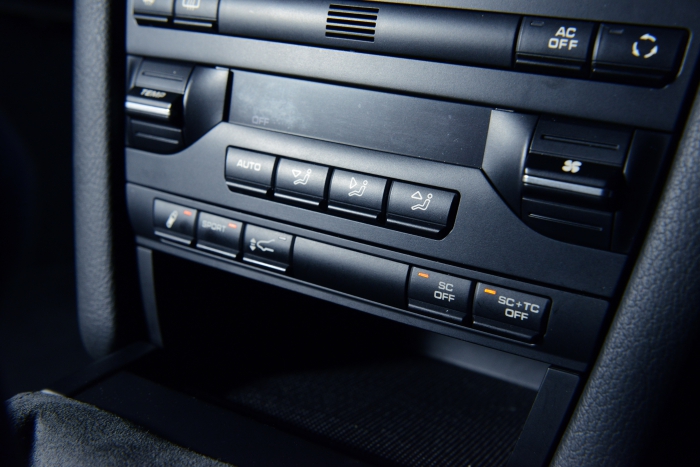
This stealthy Arctic Silver example is spec’d without the Sports Chrono package, and the dashboard looks all the more cleaner and focused for its absence. Besides, unlike the lesser models, ‘Sport’ mode is already standard on the GT3.
Although carbonfibre sports buckets (as seen on the GT2) were available as an option, the owner opted for electric sports seats, which offer an agreeable balance between snug support and comfort.
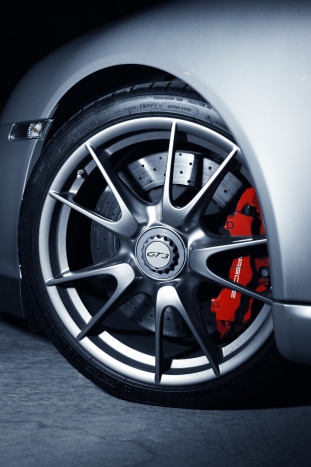
The GT3’s kerbweight tips the scales at around 1.4-tonnes, which makes for an incisively agile drive when coupled to the engine’s naturally-aspirated high-revving explosive exuberance.
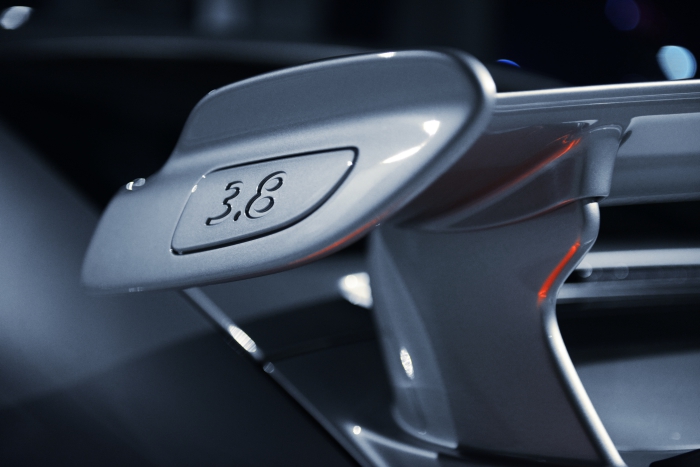
Visually, the body addenda, air-dams and scoops are functional: the oversized wing is a nod to racing versions of the GT3 – its side-plates bear the ‘3.8’ designation in homage to the 993 RS, which featured a 3.8-litre, albeit air-cooled.
It may not have the yellow callipers of the Porsche Carbon-Ceramic Brake system, but this car has been specified with lightweight centre-lock wheels.
The cabin is singularly focused, with leather and alcantara cladding a large part of the interior; apart from better grip (with gloves on) it also helps reduce glare during sunny days on track.
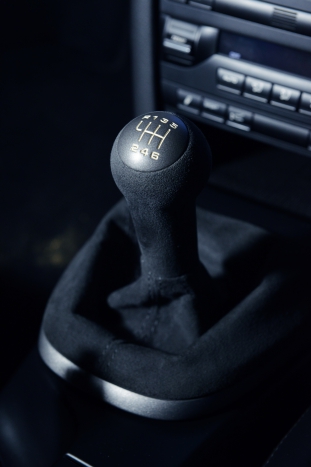
At ignition, the flat-six belches mightily to life in a mechanical overture that is distinguished with the chatter and clatter of the Mezger – in this case, its cacophony is amplified by the street-legal Akrapovic exhaust.
Working our way through the gears, one thing is apparent – the shifts require a firm hand with decisive throws; there’s no waffling about here, it’s all “do or do not, there is no try” stuff.
There’s good torque from the 3.8-litre to bumble along in town traffic, but the high end of the rev band is where the magic happens.
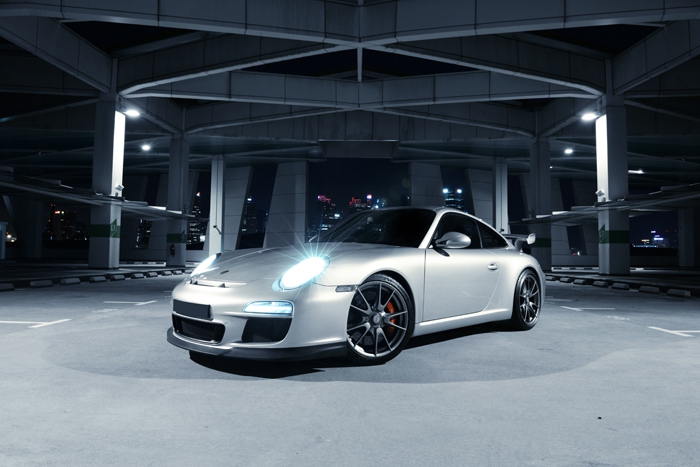
There’s an addictive urgency about the GT3 as you wring the 3.8-litre out to its raging 8000rpm redline that goads you into driving it mercilessly.
However, it rewards a firm hand and controlled inputs, as taking excessive liberties with the rear-engined rear-driven car can lead to much weeping and gnashing of teeth.
Although you do feel the weight of the engine in the rear, it is more planted and less wayward than its predecessors, which allows for rather progressive weight transfers during cornering.
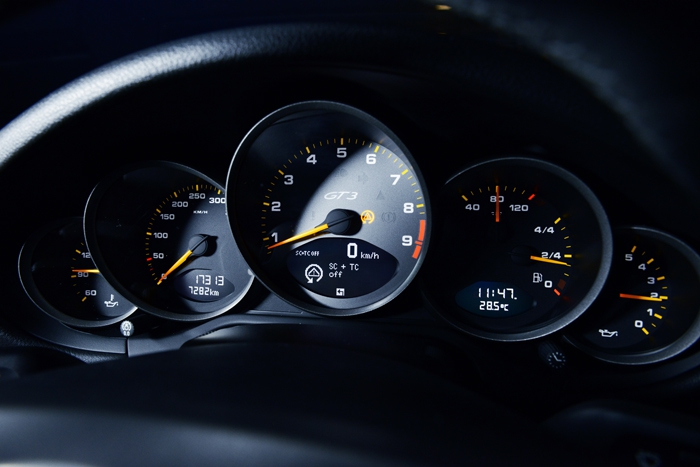
Like the shifts, the steering is sharp and natural, but never over-assisted – the brake, clutch and steering feel are perfectly weighted and it’s easy to achieve a natural fluid rhythm that is sheer poetry in motion as your hands and feet work in tandem.
The car is fast, almost explosively so towards the upper reaches of the rev band, but things come alive the moment you enter a series of corners – the driving experience intensifies a hundred-fold as you quickly butt-learn the broader limits of the car’s handling envelope; pushing it beyond this would require patience and practice.
The vivid, full-bodied intensity of the GT3’s aural and visual driving experience is a fitting reward for the challenge accepted and covenant entered into between car and driver.
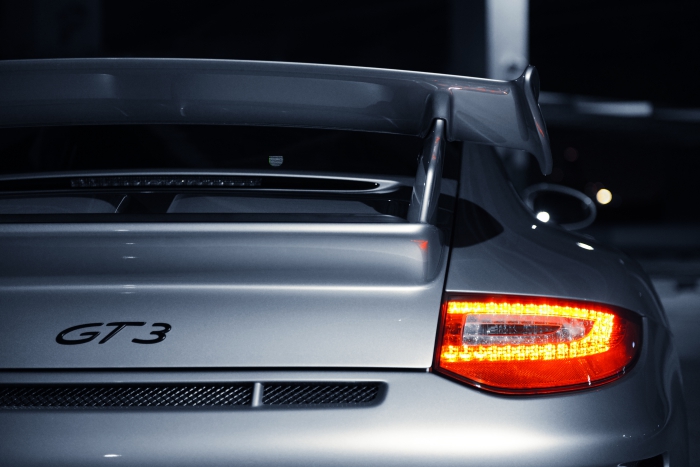
Porsche 911 (997) GT3 Mk2
Engine: 3797cc, flat6
Power/rpm: 435bhp/7600rpm
Torque/rpm: 430Nm/6250rpm
Transmission: 6spd manual
0-100km/h: 4.1secs
Top speed: 312km/h
Fuel consumption: 12.6l/100km
CO2: 298g/km
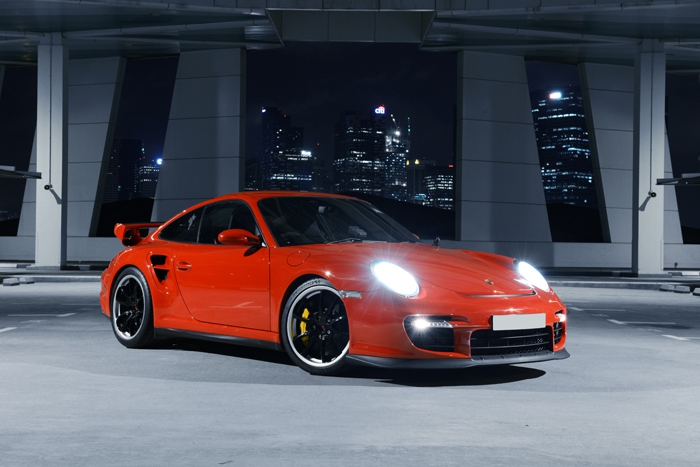
Red Alert - 997 GT2
The black elements on the rims contrast ominously against the yellow of the PCCB system, which came standard on the GT2.
Mother Nature’s most venomous creatures are often the most brightly hued – to serve as warning to the other animals who may be thinking of tangling with it.
Of course there’s a fine line between fighting chance and giving chance, since the GT2 is more than capable of raining down fire and brimstone when it is roused to anger.
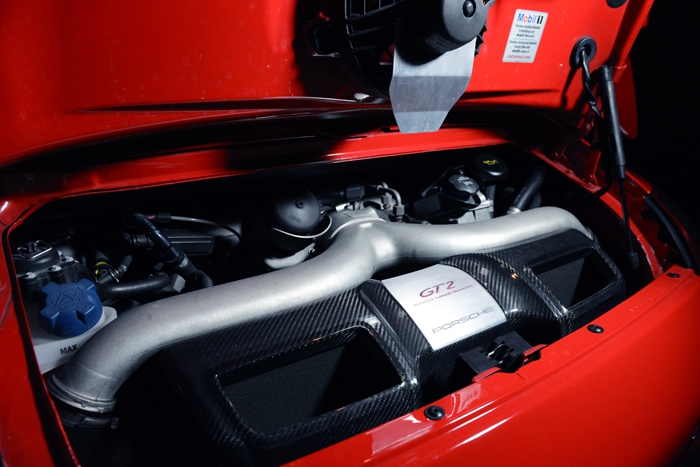
As far as the 997 was concerned, there was only the GT2 in Mk1 and the GT2 RS in Mk2, both animated by the twin-turbocharged 3.6-litre Mezger (the latter was last of the Mezger Turbos, since the Mk2 Turbo/S had already made the switch to direct-injection).
Some anecdotes even go so far as to suggest the gestation of a GT2 Mk2 was interrupted for Porsche to make the leap to a GT2 RS to trump the Nissan GT-R’s Nurburgring lap time!
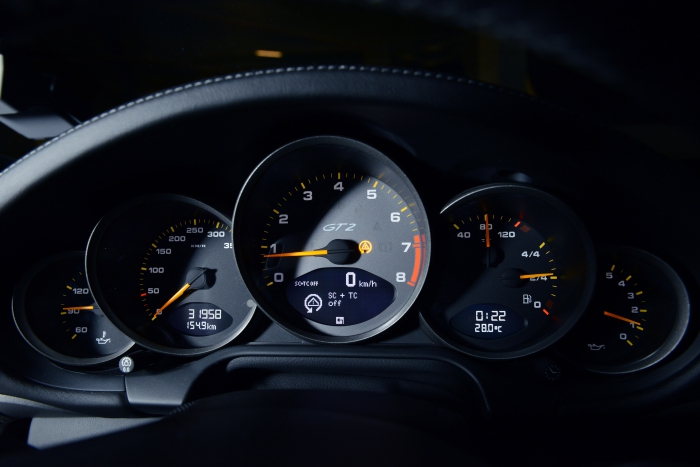
We take our time to get to learn the car, since the GT2 is not just anybody’s floozy and needs the type of guarded respect that can only come from fear of tree trunks and armco barriers.
Previous iterations of the car did not earn the ‘widowmaker’ moniker by chance. Happily enough, in 997, the GT2 comes with adequate traction control.
There’s a deceptively mild pace to this beast such that the speed alert at 90km/h comes in very useful.
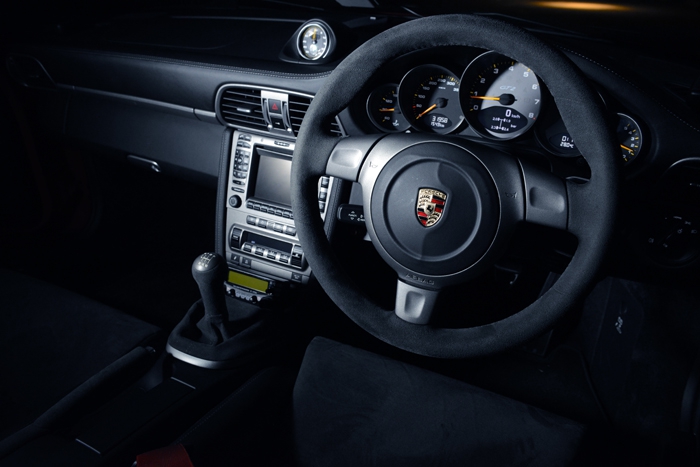
The mighty turbos start to swell from a little over 2000rpm and the full 680Nm punch at 1.4bars boost hits hard under 5000rpm to really fling the car towards the vanishing point.
Even on the straights, the fat rear rubbers squirm and wriggle under the intense seismic forces at play.
We can’t imagine driving the GT2 quickly on the roads without some semblance of traction control engaged – this is the sort of car that needs ample run-off during play-time.
Don’t get us wrong, there’s stupendous grip in the dry, but the mere hint of moisture or a smidgen too much throttle pressure should see the vigilant driver getting their guard up in readiness, especially if you’re hoping to make any meaningful progress.
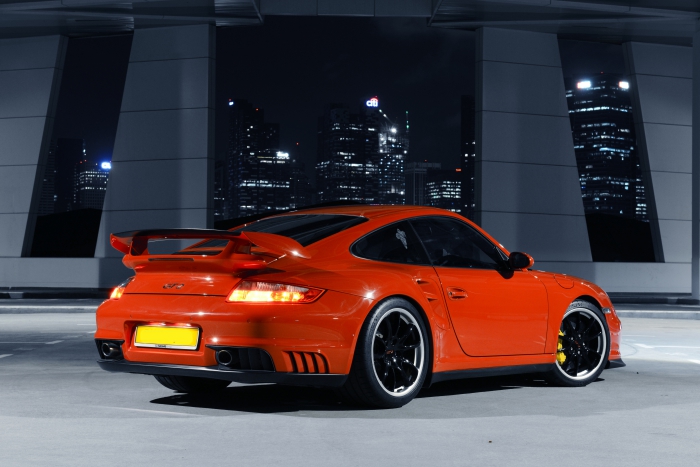
Who says stick-shift cars don’t get launch control? To add even more mayhem to the madness, the GT2’s Launch Control can be engaged by fully depressing the throttle and clutch at a standstill, with the first gear selected.
The system sets engine speed to 5000rpm and maintains 0.9bar boost on the turbos – all the driver has to do is to re-engage the clutch as quickly as possible for maximum acceleration.
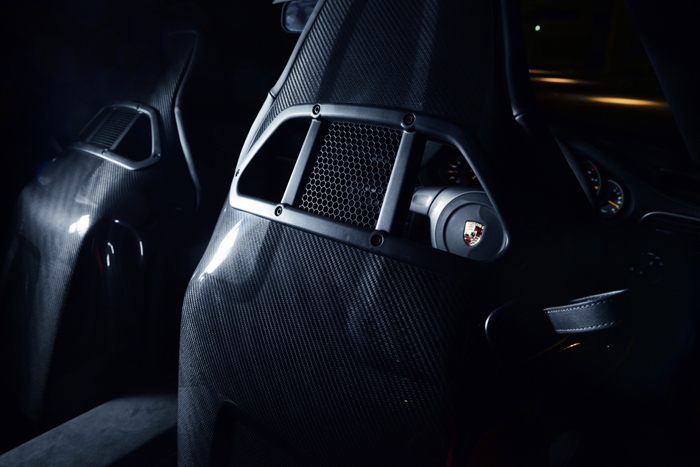
To maintain its 1440kg kerbweight, the rear-driven GT2 has undergone the requisite weight-shedding regimes, which include carbonfibre bucket seats, PCCB (saves 20kg), a titanium silencer and tailpipes, the latter of which tips the scales at 9kg (almost 50 per cent lighter than a stainless steel equivalent), as well as an aluminium rear axle subframe.
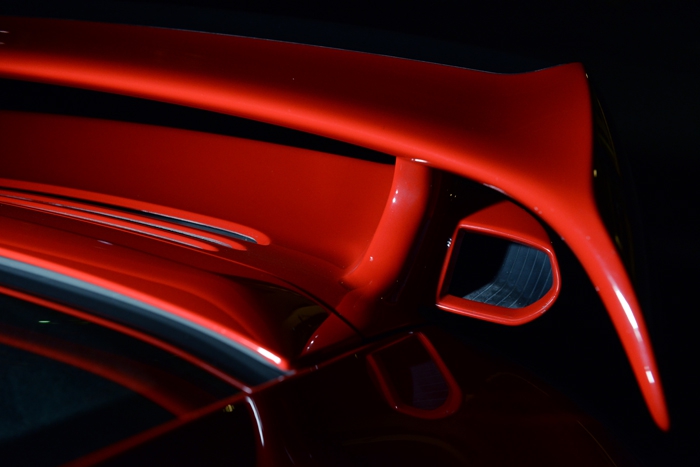
Like the GT3, there’s a crisp precision to the gear-shifts, but where the former serves up a near-linear pull all the way to redline to the accompaniment of its guttural soundtrack, the GT2 is far more fickle a mistress as the biturbo flat-six lulls you into a sense of complacent security with whispered promises of submission.
That is, until the full fury of the storm is unleashed via the rear-wheels to the song of the engine’s banshee wail through the tailpipes.
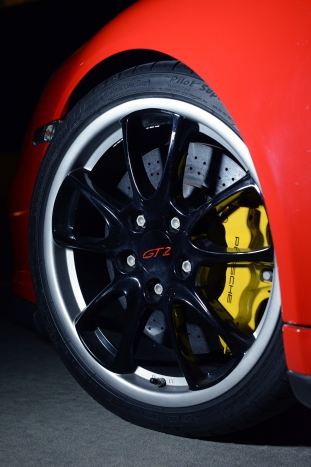
The Porsche Stability Management (PSM) has been tweaked to offer a few stages of electronic nannying – we left them active for the streets.
It takes a lot of confidence and skill to extract the most from the GT2, especially with stability disabled – any sort of pussy-footing does this beast of a car no justice; not only do you need a firm hand to tame it, you also need to be ready and know what you’re doing to deal with the tsunami-wave of boost when it hits mid-corner.
Porsche 911 (997) GT2 Mk1
Engine: 3600cc, flat6, twin-turbo
Power/rpm: 530bhp/6500rpm
Torque/rpm: 680Nm/2200-4500rpm
Transmission: 6spd manual
0-100km/h: 3.7secs
Top speed: 329km/h
Fuel consumption: 12.5l/100km
CO2: 298g/km
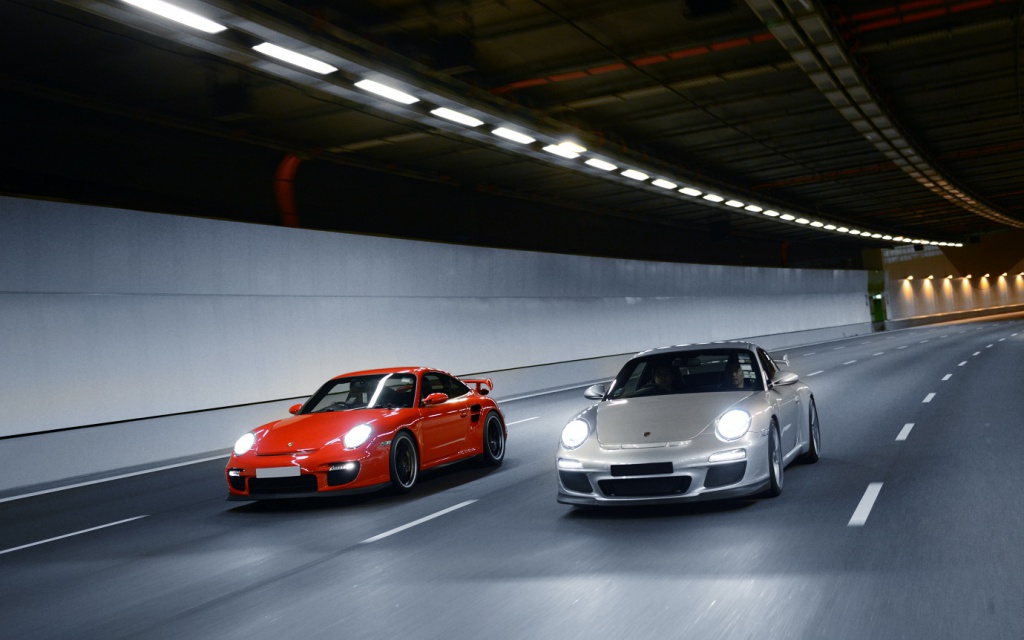
As with all GT cars, the GT3 and GT2 aren’t the sort you point and prod from A-to-B and then take delight in the fact that you’ve covered so much ground so quickly and easily... and driving enthusiasts are much better-off for this.
Making swift and effortless progress were never the point of these cars – the challenge (and the only thing that matters) is to become one with the cars in the journey from A-to-B.
One really needs to be a real hero to flog this GT3 and GT2 hard, as opposed to let’s say, having the sort of car that makes you out to be a hero…
The measure of a driver’s mettle could once be ascertained by the badge on the rump of the 911. Some may fear that these days, it’s no longer so clear...
PHOTOS Zotiq Visuals
This feature first appeared in TopGear Singapore #30 (Sept 2014)






